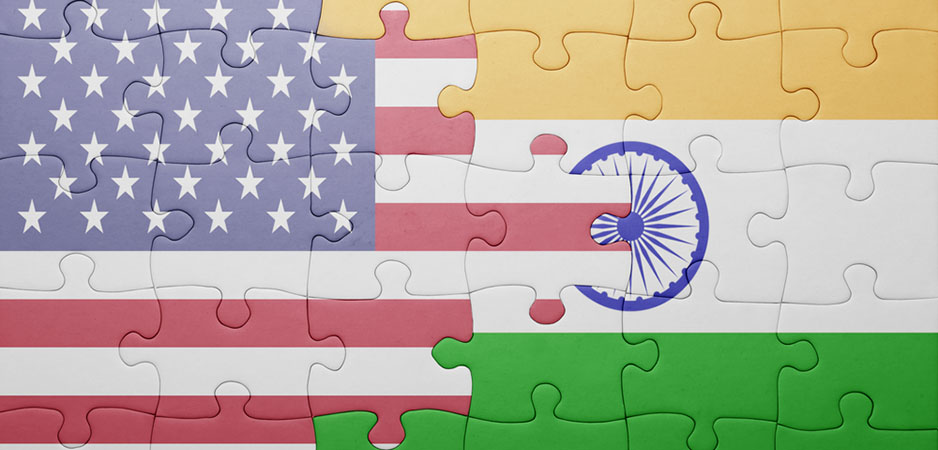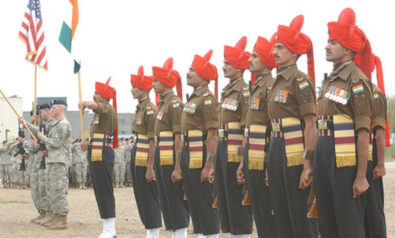Background
During India’s independence movement, India looked up to America, and America supported the Indian independence in 1947. In fact, the Indian National Congress took its name after the American Congress which had declared independence from the British in 1776. Two large and diverse democracies with much in common might seemingly have made natural allies. This was not to be so. After independence, India turned leftwards and under Nehru’s leadership tilted more towards the Soviet Union. Pakistan, a new state forged after hiving off the Muslim majority parts of India, threw itself into the arms of America and despite being a country defined by its religious identity and dominated by the army, emerged as the trusted American ally in the region.
Relations between America and India further worsened when India under Nehru’s daughter, Indira Gandhi, went through a leftward lurch. Indira declared India to be socialist and secular, a declaration that continues to be valid today. America’s perceived support of Pakistan during the Indo-Pakistan war of 1971 did nothing to assuage Indian feelings either and the Soviet invasion of Afghanistan in 1979 had a monumental impact on the relations between these two countries. India was supportive of the Soviets but the US backed Afghanistan’s Mujahideen through Pakistan. In the 1980s, Pakistan diverted much of the US assistance it was getting for supporting the Mujahideen to fund large-scale terror within India. Pakistan’s General Zia ul-Haq, bitter with the memory of the 1971 defeat, started supporting terrorist groups within India in operation Tupac, whose stated goal was to bleed India through a thousand cuts. From an Indian point of view, America, at best, turned a blind eye to its concerns and, at worst, aided and abetted terror on India’s soil.
The seismic shift in relations between the two countries occurred after the terror attacks on American soil on the fateful day of September 11, 2001. Relations had already started thawing since 1991 when India liberalized its economy after the collapse of the Soviet Union. The nuclear tests conducted by India in 1998 set relations back. India resented being hectored by the Clinton administration even more than the economic sanctions that followed. The Kargil War of 1999, which was a result of Pakistani intrusion into Indian territory, further strained relations because the Clinton administration was perceived as insensitive to the violation of Indian territorial sovereignty. It took the Bush Administration to patch up relations with India by concluding a nuclear deal in 2005. It saw India as an ally in the war against terror and began a new phase in the relations between the two countries.
Why are relations between America and India important?
America and India are two of the world’s largest democracies. They have strong and growing business relationships, similar strategic interests and huge cultural similarities. Both have rambunctious political systems that make decision making complex and difficult.
Yet, old habits die hard and power structures in Washington DC and New Delhi are fossilized in the past. The geriatric Indian political leadership cut its teeth in the Soviet Era and has a Pavlovian suspicion of America. The policy elites in Washington DC are still unable to yoke themselves away from Pakistan and truly acquaint themselves with India. More often than not, they are drawn together by the fear of China instead of by their joint common interests.
Better relations between America and India are required for improved business relations, greater security against terror attacks, and reform of international institutions. The music is playing and it is high time that the eagle and the elephant learnt to dance together.
For more than 10 years, Fair Observer has been free, fair and independent. No billionaire owns us, no advertisers control us. We are a reader-supported nonprofit. Unlike many other publications, we keep our content free for readers regardless of where they live or whether they can afford to pay. We have no paywalls and no ads.
In the post-truth era of fake news, echo chambers and filter bubbles, we publish a plurality of perspectives from around the world. Anyone can publish with us, but everyone goes through a rigorous editorial process. So, you get fact-checked, well-reasoned content instead of noise.
We publish 2,500+ voices from 90+ countries. We also conduct education and training programs on subjects ranging from digital media and journalism to writing and critical thinking. This doesn’t come cheap. Servers, editors, trainers and web developers cost money.
Please consider supporting us on a regular basis as a recurring donor or a sustaining member.
Support Fair Observer
We rely on your support for our independence, diversity and quality.
Will you support FO’s journalism?
We rely on your support for our independence, diversity and quality.







